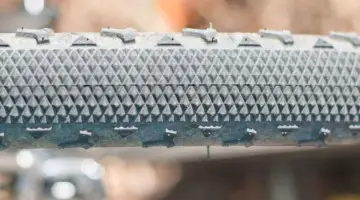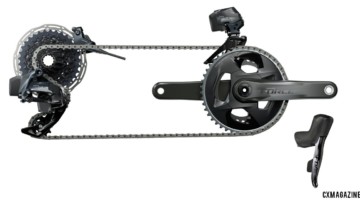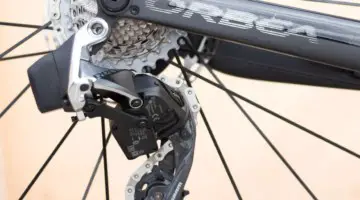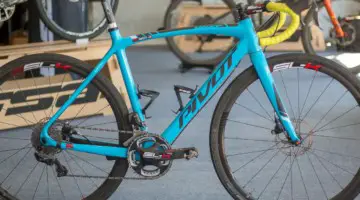For the most part, cyclocross racers are nothing if not gear fanatics. From wheels and tires to braking options and bar tape, ‘cross racers have a thing for equipment. It’s not too surprising as the sport is unique in its needs and cycling in general is a gear-centric endeavor, however you ride.
Of course there’s also the fact that many riders like to have the latest and greatest when it comes to equipment. So it is too with new technologies. When you combine cycling gear and high-tech, for many you get a perfect storm of equipment “need.”
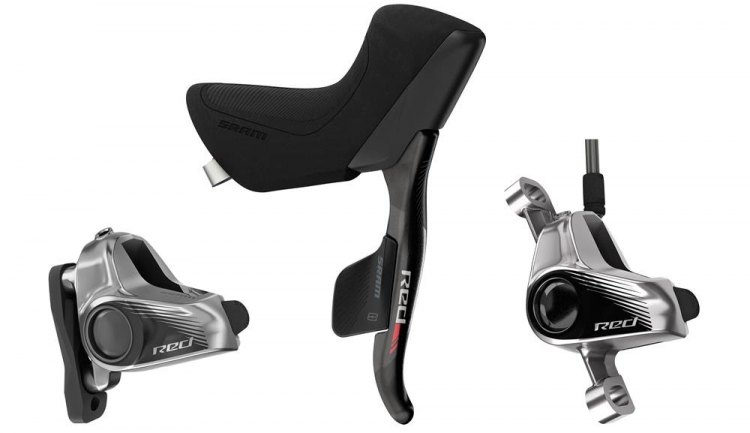
SRAM’s new HydroHC eTap levers and disc brakes. Are they ideal for cyclocross. Likely. Photo courtesy SRAM
Perhaps no other piece of high end bike gear epitomizes this more than electronic shifting. A handful of curmudgeons, including one Cyclocross Magazine staffer, while secretly lusting after these systems, dismiss electronic drivetrains as “just another thing to have to plug in and charge.” But we suspect nearly anyone would jump at the chance to own an electronic kit. The hold up? For most it’s simply cost. The systems are still quite expensive.
Setting cost aside, is an electronic drivetrain worth it for ‘cross? Jim from the San Francisco Bay Area is wondering this asking, tongue in cheek,
[w]ill upgrading to electric shifting make me faster, or at least look faster? Or will I actually look slower since I would be less equipment limited?
While Jim’s question is seemingly a joke, we do get asked serious variations of this all the time. Should I get an electronic kit? Does it work better? Is electronic shifting good for cyclocross?
In a nutshell, ignoring cost, which is hard to do, we’re fans of electronic shifting in general and especially for ‘cross. Here’s why.
To put it bluntly, electronic shifting systems always work. Regardless of conditions, in our experience the shifting of electronic drivetrains is always spot on. For those that are fans of 2x systems, electronic front derailleurs are the best available, with minimal effort, auto trim, and no annoying chain rub.
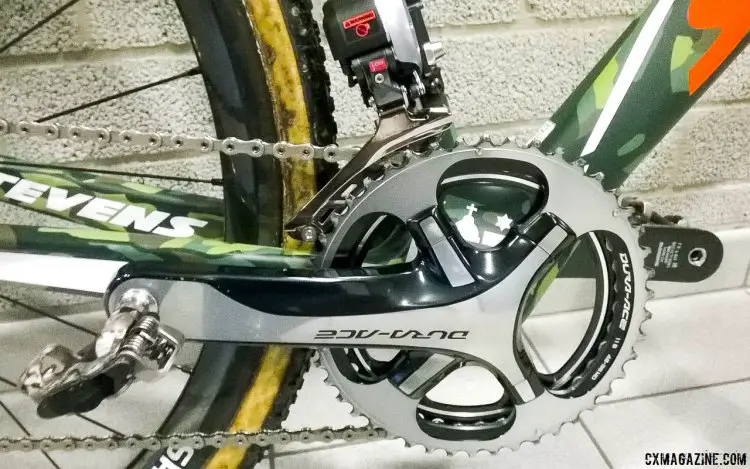
Shimano Dura-Ace 9000 crankset and 46/39 rings. Di2 9070 front derailleur. Mathieu van der Poel’s 2015 World Championship-winning Stevens Super Prestige disc cyclocross bike. © Cyclocross Magazine
There’s also the fact that electronic drivetrains require less maintenance. If after muddy, wet races you’re cleaning your bike and perhaps needing to replace cables and maybe housing, that maintenance is a thing of the past. A wipe down of the frame and a cleaning and lubing of the chain and you’re ready to go again. Over a season’s worth of maintenance, this is all time that adds up and could be better spent resting and recovering, training and/or building more goodwill capital at home so you can go to the next race.
The fact that the shifts are so easy is also a plus in electronic drivetrains’ favor. Late in a race when you’re cross eyed and exhausted, the simplicity and ease of shifting an electronic system can’t be beat. Yes, mechanical Dura-Ace has a pretty light and simple lever throw. But even that system still requires more movement and coordination than pushing a button when you’re deep in the red.
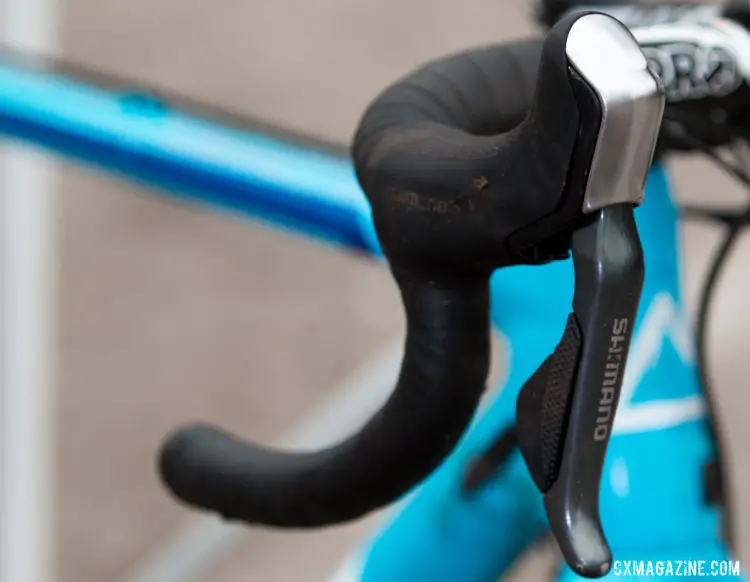
Shimano R785 hydraulic Di2 levers on Jonathan Page’s 2015 National Championship Fuji Altamira cyclocross bike. © Cyclocross Magazine
Electronic drivetrains, especially the top end groups like Shimano’s Dura-Ace Di2 and even it’s Ultegra Di2 kit and SRAM’s new wireless eTap no longer suffer the weight penalty they did when they were first introduced as compared to their mechanical counterparts. So fears of 20-pound cyclocross superbikes are unfounded.
And, it perhaps goes without saying the the systems have been proven at the highest level of our sport. From Sven Nys and Katie Compton to Mathieu van der Poel and Lars van der Haar.
Yes, the cost is an issue. Yes, if you crash hard enough to damage the rear derailleur, not entirely uncommon in ‘cross, your financial advisor may have to work some magic to get you up and running again. But if you can get past that–a big if–electronic drivetrains are quite an upgrade, and may make it really hard to switch back to mechanical shifting.
Whether or not they make you faster, or make you look slower since you’ll have fewer equipment excuses, we’ll leave to you to determine.
Have your own Wednesday Wondering? Fill out the form below and maybe we’ll answer your question online or in a future print issue.























